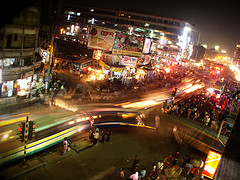Thirty-three-year-old reporter Michael Hastings died Tuesday in a car crash in Los Angeles. Hastings is best known for his devastating Rolling Stone profile of Gen. Stanley McCrystal, which led to the general’s resignation.
Hastings wasn’t afraid to make enemies to expose the truth, but he also cultivated many friendships. National security reporter Ali Ghirab was one of those friends. He recalls Hastings as a generous mentor to younger journalists, a sentiment echoed by many who knew him:
Michael the reporter was a thing to behold, and no less Michael the friend. He disdained low-level aides and flacks—”his target was always the principal,” Smith wrote. That parsing of the pecking order, though, didn’t extend to his personal life or interactions with colleagues. It can be tough to get a word with star reporters, but not Michael. Young journalists flocked to him, and he talked freely with them. He cared about what even his most junior colleagues thought. He gave and gave and gave to young reporters, who wanted to know his secret (“devote your life to journalism”—and he did); he employed his well-honed bullshit detector and, if everything was copacetic, deferred to them.
[…]
Watching Michael with younger reporters, or doling out advice to aspirants, it was easy to see him years down the road, still baby-faced and energetic, but with some gray hair and a couple extra pounds on his slender waistline. He’d still be coaching, still be helping colleagues achieve their ambitions, and still making time for his friends, to discuss grave matters or just laugh for a while (or both at the same time). Then there’re the expectations for the important work he would have produced. The journalism industry, the country and the world are worse off for losing him. He was a model journalist just as he was a model friend—it’s impossible to know which he was better at. He will be sorely missed.
Dave Weigel of Slate remembers Hastings fondly from the 2012 campaign trail, where Hastings’ utter disinterest in currying favor with powerful sources set him apart from most of his colleagues.








